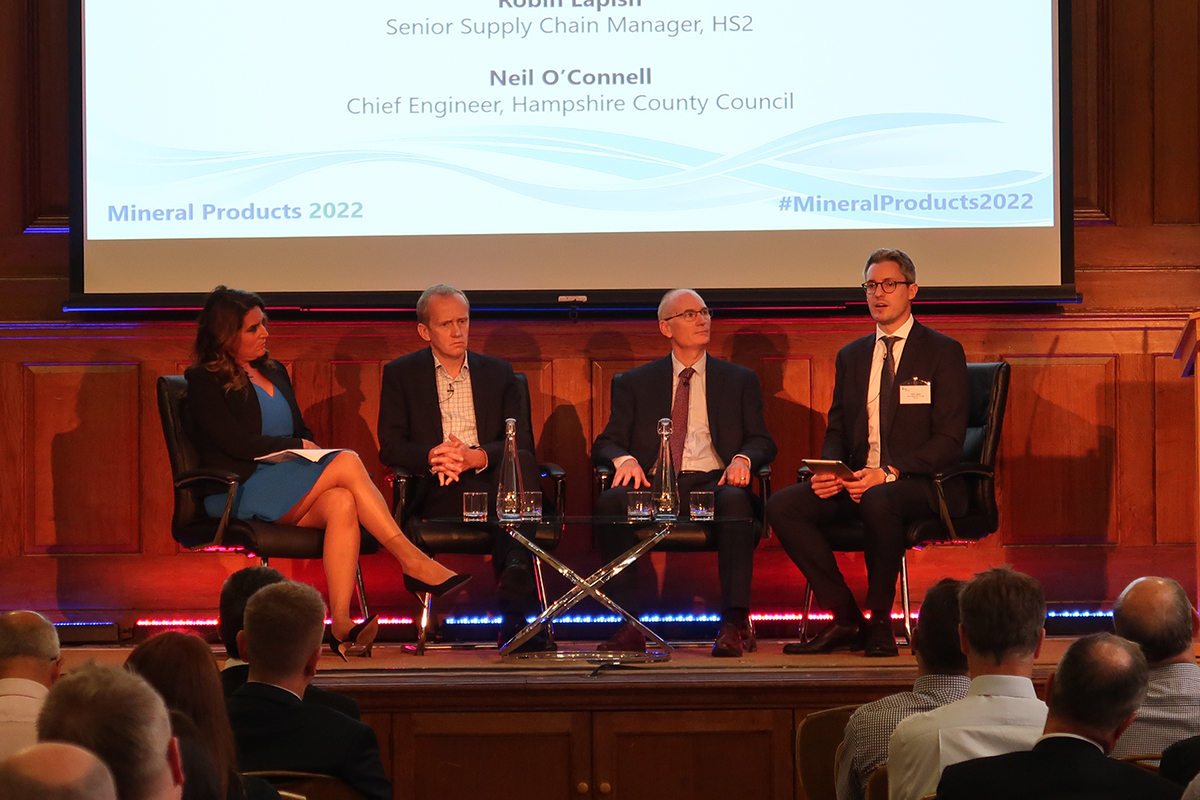
That was the recurring theme from speakers at the Mineral Products Association (MPA) conference held in Westminster, London, on Monday, 27th June. Entitled Government as Client – Delivering for the Public Sector, the event was hosted by journalist and broadcaster Samantha Simmonds and sponsored by Archaeological Research Services.
Nearly 200 senior figures from across the mineral products industry heard from a line-up of eminent speakers from UK infrastructure, housing and construction during a packed programme of presentations and panel discussions, all of which linked back to the crucial relationship between the Government and the mineral products industry.
Half of the 400 million tonnes of mineral products made in Britain each year are procured by the Government – directly or indirectly – for transport and energy infrastructure, water supply and flood defences, town centre regeneration, schools, hospitals, community facilities, social housing and more.
Nigel Jackson, Chief Executive of the MPA, said: “The Government is the mineral product industry’s biggest client. With that kind of buying power and its commitment to building ‘better, faster and greener’ – plus the changing procurement practices set out in the Construction Playbook – the Government has a golden opportunity to positively influence the way materials are planned for, specified, sourced and delivered.
“As the biggest supplier to construction, the mineral products industry is fully on board with the transition to better, faster and greener building. We’re already ‘working with the grain’ to deliver for the public sector and, with a little more understanding and engagement, the mineral products industry could play an even greater role in the green revolution.”
Opening the first session of the conference was Melissa Zanocco, OBE, Head of Programmes at the Infrastructure Client Group (ICG). She outlined the work of the ICG, including accelerating the adoption of the Green Construction Board’s low carbon concrete routemap, developed with the involvement of MPA’s UK Concrete team. “If clients don’t ask for low carbon concrete, then suppliers will not produce it, and it will not be affordable,” she said, “and Government legislation and standards need to help with creating the enabling environment in order for clients to be able to specify low carbon concrete, so all stakeholders have to move together in tandem.”
The first panel session explored how national and local stakeholders can work together with MPA members to deliver major infrastructure projects. Panel members included Robin Lapish, Senior Supply Chain Manager for HS2, Neil O’Connell, Chief Engineer at Hampshire County Council, and Malcolm Dare, Executive Director for Commercial & Procurement for National Highways.
Robin Lapish emphasised the need for transparent trading terms and early engagement with aggregates producers to ensure the supply of mineral products is not assumed: “It’s important that we as a client work hand-in-hand with our contractors and suppliers, engaging early so they can start building demand into their business plans. Liaising with aggregate working groups at a local level along with the MPA offers a mechanism to have that conversation locally as well as understanding the national picture.”
‘Procuring resilience’ was the subject of the next presentation from Andy Powell, Innovation Manager for the Environment Agency (EA), who reiterated the importance of mineral products in maintaining and improving flood barriers and coastal defences. “We are committed to net zero carbon by 2030, and we’re looking at different materials, techniques and technologies to further reduce our carbon footprint,” he said. “The mineral products industry is part of the solution – we need your materials, but we also need your expertise - and through early engagement, we can work together better to identify low carbon solutions.”
In session two, Fergus Harradence, Deputy Director for Infrastructure & Construction at the Department for Business, Energy & Industrial Strategy (BEIS), talked through the Government’s Construction Playbook and highlighted the move towards ‘outcome-based specification’ of materials. “Construction procurement is highly devolved, and trying to take a consistent approach is a challenge,” he said, “but one of the reasons for developing the Construction Playbook was to try and achieve greater consistency, to communicate to the industry what the Government expects in relation to carbon, sustainability, innovation, investment and skills.”
Housing was the topic in the spotlight for the final panel session, where speakers included John Slaughter, Director of External Affairs at the Home Builders Federation and Rafe Bertram, Sustainability Facilitator for Enfield Council’s low-carbon Meridian Water development of 10,000 homes.

Rafe Bertram said that concrete would likely be needed for structures of Meridian Water and that the development’s strong environmental policy to deliver in line with the net zero best practices represented “an opportunity for the concrete industry to address the embodied carbon in concrete and deliver on the roadmaps we’re signed all up for”.
After lunch, delegates were treated to a preview of a new MPA film ‘Make the Link to Mineral Products’. That was followed by special guest, leading political journalist and prominent media commentator Lord Daniel Finkelstein OBE, who gave a wry commentary on the UK’s current political landscape.
Nigel Jackson added: “I am grateful to our excellent line-up of speakers, our 200 delegates from MPA member companies, our sponsors and exhibitors, and our team of behind-the-scenes organisers, all of whom helped to make the event a resounding success!”










